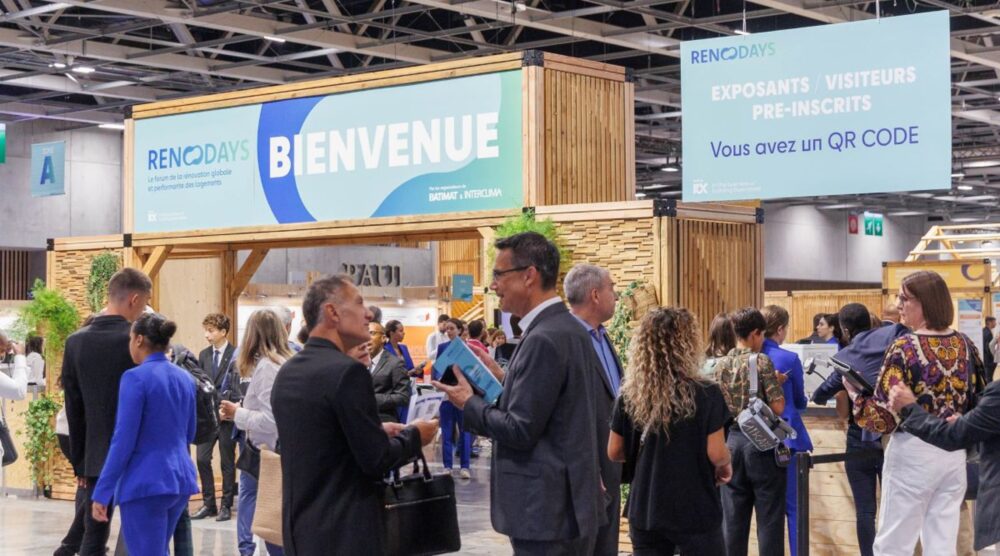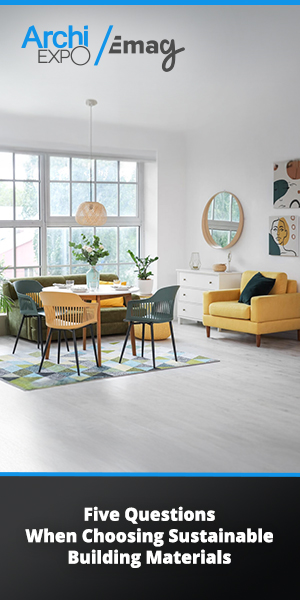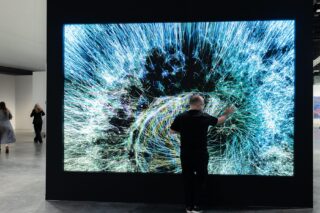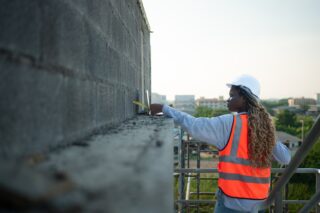At Renodays 2025, experts and industry leaders outlined how circular practices are reshaping the way architects and builders approach sustainable design.
October 7 – 8, 2025 – Renodays, the forum dedicated to comprehensive and efficient building renovation, set out to address France’s ambitious national targets for energy renovation. Over two days, the event, held at Porte de Versailles in Paris, brought together experts, institutions, and exhibitors covering every stage of the building process–from diagnosis to materials, construction, and beyond. With a strong focus on the energy transition and sustainable construction, their program highlighted not only technological solutions but also new ways of designing with resources in mind.
One of the central themes throughout the forum was the circular economy in building renovation. In the talk entitled “Optimizing Resources: From Deconstruction to Recycling – The Circular Economy in Renovation,” experts explored transforming practices and reshaping the future of materials in construction.
Building Circularity: Traceability, Durability, and Sanitary Regulations
The circular economy isn’t something to add at the end of a project–it has to be integrated right from the diagnostic and design phases. That means thinking about materials, regulations, and long-term performance from the moment a project begins. As Alexandra Lebert, Director of Strategic Action for the Circular Economy at CSTB, explained, this approach requires close collaboration among architects, engineers, and public authorities to keep technical regulations up to date and ensure the quality and safety of buildings.
“When we speak about the circular economy in buildings, it’s not only about reusing materials. We have to think about three things: the question of traceability, durability, and even sanitary regulations. The path forward must address all of these aspects together,” she shared.
Lebert brought up the Base de Données Nationale des Bâtiments (BDND), the country’s centralized building database that brings together administrative, geographic, and energy data.
“The BDND is an example of a wonderful collaboration at scale. It helps local actors anticipate and measure the real impact of circular economy strategies, ” she added.
Such tools are critical in enabling architects to visualize their building projects. They also strengthen the connection between data and design, allowing circular thinking to inform both creative and regulatory decision-making. By embedding these principles early in the process, she explained, circularity becomes a design mindset rather than an afterthought.
A Cultural and Economic Commitment for the Long-Term
For the circular economy to succeed, it has to be a long-term vision across the construction industry. As Laurent Demasles, President of the Groupe PANDO, put it, “Circularity is first and foremost a conviction, not just a pragmatic calculation.”
He went on to explain what he meant by this, sharing that there are times when construction is driven by short-term goals like deadlines and lowering immediate costs without necessarily considering the lasting impact on resources and communities. For PANDO, adopting circular methods means proving that economic performance and environmental responsibility can reinforce one another rather than compete.
Hugo Conzelmann, Head of Public and Legal Affairs at the Institut National de l’Économie Circulaire (INEC), expanded on this idea, emphasizing that circularity also challenges how we think about material value itself. Beyond materials and metrics, the discussion underscored that circular construction is a cultural shift that requires a renewed sense of responsibility toward the built environment.
“Circularity forces us to ask: is this resource even available?” Conzelmann said. “It pushes us to reflect on frugality and on how we value what we already have.”
Companies to Watch Out For
At Renodays, attention turned from inspiring ideas to innovation on the ground. Here are standout companies showcasing real, buildable solutions for sustainable construction.
1. ID PRO — bespoke interior systems for pro & institutional fit-outs
ID PRO, the new professional brand from Schmidt Groupe, brings decades of precision joinery expertise to commercial, hospitality, and institutional spaces. Specializing in tailor-made cabinetry, built-in furniture, and functional layouts, the company combines industrial production capacity with bespoke design flexibility. Manufactured entirely in France, their solutions emphasize durability, clean detailing, and responsible materials. For architects and designers, ID PRO offers a turnkey partner capable of transforming interior concepts into high-quality, installation-ready joinery systems.
2. Dorémi — turnkey energy retrofit & contractor network
Dorémi has become a key player in energy-efficient home renovation, supporting individuals throughout their renovation projects. The company coordinates work on insulation, heating, and ventilation systems, partnering with RGE (Reconnu Garant de l’Environnement)-certified craftsmen. Through its local initiatives, Dorémi also helps boost employment among craftsmen and small contractors by promoting hands-on training and collaboration across regional networks. Today, the organization works with more than 60 territories, covering around 20% of the French population.
3. Tipee — your R&D & training hub for circular building solutions
Tipee is a technology platform for sustainable construction, dedicated to developing innovative solutions that address real-world challenges in the building sector. Acting as both a research and training center, the organization connects regional actors to accelerate the energy and environmental transitions within construction. They do this by applying a 360° approach that is organized around their three main activities: a multi-scale laboratory that tests materials, an engineering and research center for design studies, and lastly, a continuing education center to train construction professionals–from project owners to craftsmen–on sustainable building practices.











